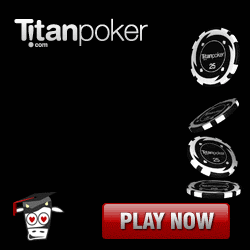The MTT Endgame
April 9, 2011, Posted by Pokerfarm

Seeing as we're unlikely to cash in MTTs more than about 1 in every 9 attempts, it's critical to make sure we are giving ourselves the best chance of winning when we do. I tend to have three objectives for every tournament I play - Firstly to make the antes, preferably with a stack. Secondly to cash in said tournament, and thirdly to win the thing. As obvious as the last statement sounds, it is also misinterpreted by some players. Playing to win doesn't necessitate playing recklessly, nor more cautiously. It relates to playing with increased calculated aggression.
Following on from last month’s piece about re-stealing we’re going to look at three common situations in the money stages of online MTTs - Post bubble, last 2 tables and final table. Before we look at some situations it’s important we try not to be results oriented; don’t be afraid to get your chips in first or go with a read on a particular player in a specific spot. There’s nothing more frustrating than playing for 6 hours to 4-bet shove on the table loon and come 19th out of 3500 players when he flips aces, but taking advantage of these types of situations is key to developing your end game, regardless of the outcome. Don’t be disheartened when things don’t go to plan. MTTs can be soul destroying, but identifying and exploiting profitable situations is fundamental to our progress as tournament players.
In the Money
So we’ve reached the cash. We’ve been playing a few hours now and should have developed some reads on who’s been active, who’s been passive, who’s likely to play back at us, and who’s just plain bad. Ideally we’ve had a smooth ride to the money spots and have been able to accumulate chips around the bubble. The initial period after the bubble will see a flurry of all-ins, as those clinging on to their 3BB stacks shovel in their chips hopelessly in pursuit of a double up.
Play will loosen up and I’m an advocate of not going too crazy away if I have over 30BBs. Stacks are now fairly shallow so with a reasonable stack it’s important to not give chips away cheaply. Employ a tight-aggressive approach at this stage and be aware who is likely to re-steal from you and adjust accordingly. With a medium sized stack we’re looking to 3bet shove on similar and larger sized stacks where we have fold equity. With a small stack we’re obviously looking to just get our chips in first and find that elusive double up. Play should now be predominantly pre-flop, so we’re looking to open, 3bet or fold. One mistake I see so many players making at this stage, especially in mid/low buy-in MTTs, is habitually calling raises preflop and bleeding away their chips. Here’s an example from a recent $55 freez-out where the villain makes a complete hash of his hand simply by playing too passively preflop.
9 players blinds 500/1000/125a
Seat 1: (19,846)
Seat 2: Hero (41,849)
Seat 3: Villain(39,548)
Seat 4 Button: (19,950)
5 SB: (54,186)
6 BB: (25,757)
Seat 7: (32,741)
Seat 8: (34,434)
Seat 9: (98,282)
Seat 5 posts the small blind of 500
Seat 6r posts the big blind of 1,000
The button is in seat #4
*** HOLE CARDS ***
Dealt to Hero [6h 4h]
folds
folds
folds
folds
Hero raises to 2200
Villain calls 2200
folds
folds
folds
*** FLOP *** [9s 6d 6c]
HERO checks
Villain checks
*** TURN *** [9s 6d 6c] [Qd]
HERO checks
Villain bets 4850
HERO raises to 10999
Villain calls
*** RIVER *** [9s 6d 6c Qd] [Ac]
HERO bets 8999
Villain calls 8999
Hero shows three of a kind, Sixes
HERO wins the pot (47,021) with three of a kind, Sixes
Villain showed [Qs Kh] and lost with two pair, Queens and Sixes
In this instance we are both 40bbs deep and there is no excuse for the villain not to 3bet my late position raise. I have been opening more than my fair share of pots and QK is justifiably stronger than my perceived range. The logic behind the villain’s call is probably that we are both deep and he thinks he has a hand that plays well postflop. The reality is there’s no need to have to be playing postflop here. A small 3bet will take the pot down most of the time and cost a lot less in the long run.
Then there were 2...
With two tables left the dynamic is very different to that around the money bubble; the main difference being that players are now aware of the big money jumps. Scraping just into the money you’re unlikely to get double your buyin back. With 18 players left, the final table looms and we’re within a sniff of the big bucks. This means that play will tighten up significantly and we have a great opportunity to steal and re-steal liberally. By now we should be familiar with our opponents tendencies and know who the best candidates are to steal from. With a big stack we need to use it to our advantage so we’re looking to 3bet in a variety of circumstances. Players with 30bb+ stacks are our targets here who are likely to err on the side of caution. I’ll try to stay away from good thinking players if at all possible, although one scenario that crops up occasionally at this stage is the re-re-steal. This is the ultimate steal and a tactic that used intelligently can be very powerful. It also has the potential to go pear-shaped and has been the source of many a tournament blow-up and red faced exit. What we need to consider with the re-re-steal is primarily stack size and the fold equity and showdown value we have against our opponent. This is a move that will only work in a deep stacked situation, preferably against a player who is capable of folding and who has been very active. Here’s an example of a re-re-steal with 15 left in a large field $109 freezeout. The 3bettor is an aggressive thinking player who has been the most active player at the table. Our line is incredibly strong with the intention of getting him to fold all but the very best of his range.
Seat 1: (100396 in chips)
Seat 2: Villain button (300110 in chips)
Seat 3: Hero SB(256799 in chips)
Seat 5: BB (119118 in chips)
Seat 6: (125954 in chips)
Seat 7: (209384 in chips)
Seat 8: MP (221823 in chips)
800 ante
Hero: posts small blind 4000
BB: posts big blind 8000
*** HOLE CARDS ***
Dealt to Hero (6h, 7h)
MP: raises 12000 to 20000
Villain button: raises 25000 to 45000
Hero SB: raises 202999 to 247999 and is all in
BB folds
MP folds
Villain folds
In this instance the villain timebank folded, and we increased our stack by nearly 30% without showing our cards. This was the perfect spot for a re-re-steal where both villains were deep enough stacked and the perceived strength of our hand plus the fold equity we created made it a great spot to cold 4bet shove. Taking advantage of these sorts of situations will dramatically increase your chances of making the final table with a dominant stack and a good shot at the top spots.
The Final Table
So we’ve made it to the promised land. After several hours of chip accumulation we’re now within touching distance of the finishing line. By now we are acutely aware of table dynamics and have established our image as an aggressive foe, not afraid to 3bet and 4bet light, and hopefully sitting with a hefty amount of chips to show for our hard work. Play will be cagey initially, and the shorter stacks will be waiting for each other to bust in order to climb the pay ladder. It’s important to remember now that this is a continuation of the same tournament. Often players who have played solid aggressive poker to reach the final table will become daunted, freeze up and soon find their stack dwindling only to make mistakes and bust. Try to keep your momentum going and take control of the table. It should be fairly apparent who is now trying to ladder up the money spots, and who is playing to win, so adjust correctly and be aware that some of the shorter stacks will be itching to re-shove over your raises at the first opportunity. We should always be aware of ICM considerations at the final table. ICM dictates what our expected tournament winnings are in comparison to our stack size and how to play our hands optimally. What may seem like an easy call is not always the case so bear this in mind. Controlled aggression is the key but reckless spew has the habit of decimating chip stacks very quickly. I was the benefactor of some ICM spew in a $75 deep-stack final table recently. Myself and one other player had double the average stack with 8 players remaining. Considering the payouts and relative stack-sizes I was amazed to see him call off a huge over-bet shove on the turn with his hand.
Seat 1: (201,585)
Seat 2: Hero (573,850)
Seat 3: (141,975)
Seat 4: Villain (559,447)
Seat 5: (125,276)
Seat 6: BUTTON (87,909)
Seat 8: SB(322,290)
Seat 9: BB(352,668)
The button is in seat #6
*** HOLE CARDS ***
Dealt to Hero [Ah Kc]
folds
Hero raises to 25,990
folds
Villain raises to 56,651
folds
folds
folds
folds
Hero calls 30,661
*** FLOP *** [Kd 8s 2c]
Hero checks
Villain bets 42,545
Hero raises to 112,990
Villain calls 70,445
*** TURN *** [Kd 8s 2c] [3d]
Hero bets 402,709, and is all in
Villain calls 388,306, and is all in
Hero shows [Ah Kc]
Villain shows [Js Ks]
*** RIVER *** [Kd 8s 2c 3d] [7d]
Hero shows a pair of Kings
Villain shows a pair of Kings
Hero wins the pot (1,145,894) with a pair of Kings
While the villain in this hand may be right a small percentage of the time, his call here is totally unnecessary considering the chips he still has in play. While persistent aggression is key to going deep in tournaments, being aware of stack sizes and the bigger picture is critical. Hopefully some of these examples can help you to push on and make plenty of deep runs at final tables sometime soon.
What Others Are Saying
1 Comment about The MTT Endgame





mesoanarchy says:
4th of October 2011
Thanks for sharing these valuable ITM strategy nuggets. Where can I get the previous articles on MTT play you mention here?